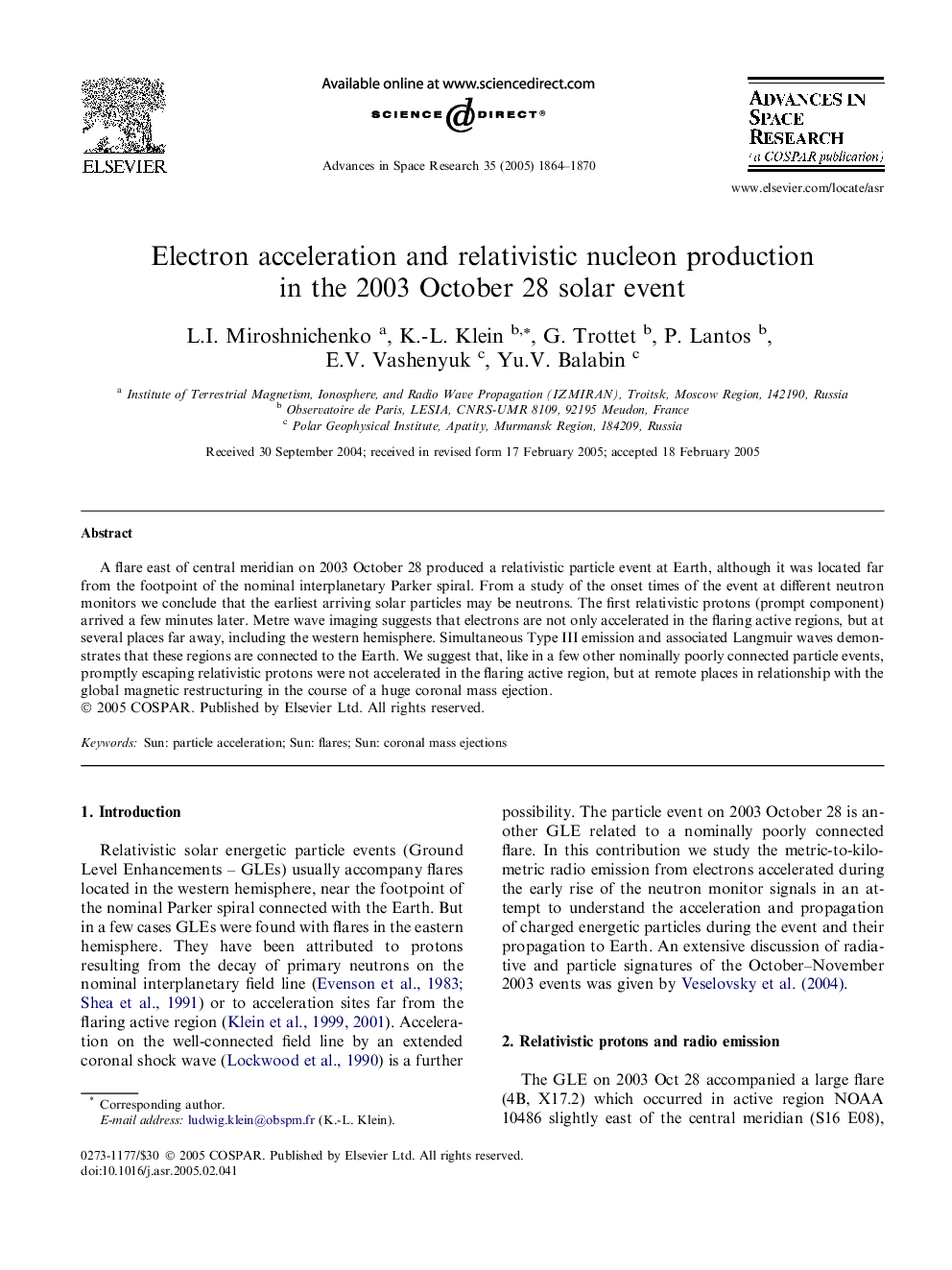| Article ID | Journal | Published Year | Pages | File Type |
|---|---|---|---|---|
| 10695032 | Advances in Space Research | 2005 | 7 Pages |
Abstract
A flare east of central meridian on 2003 October 28 produced a relativistic particle event at Earth, although it was located far from the footpoint of the nominal interplanetary Parker spiral. From a study of the onset times of the event at different neutron monitors we conclude that the earliest arriving solar particles may be neutrons. The first relativistic protons (prompt component) arrived a few minutes later. Metre wave imaging suggests that electrons are not only accelerated in the flaring active regions, but at several places far away, including the western hemisphere. Simultaneous Type III emission and associated Langmuir waves demonstrates that these regions are connected to the Earth. We suggest that, like in a few other nominally poorly connected particle events, promptly escaping relativistic protons were not accelerated in the flaring active region, but at remote places in relationship with the global magnetic restructuring in the course of a huge coronal mass ejection.
Related Topics
Physical Sciences and Engineering
Earth and Planetary Sciences
Space and Planetary Science
Authors
L.I. Miroshnichenko, K.-L. Klein, G. Trottet, P. Lantos, E.V. Vashenyuk, Yu.V. Balabin,
